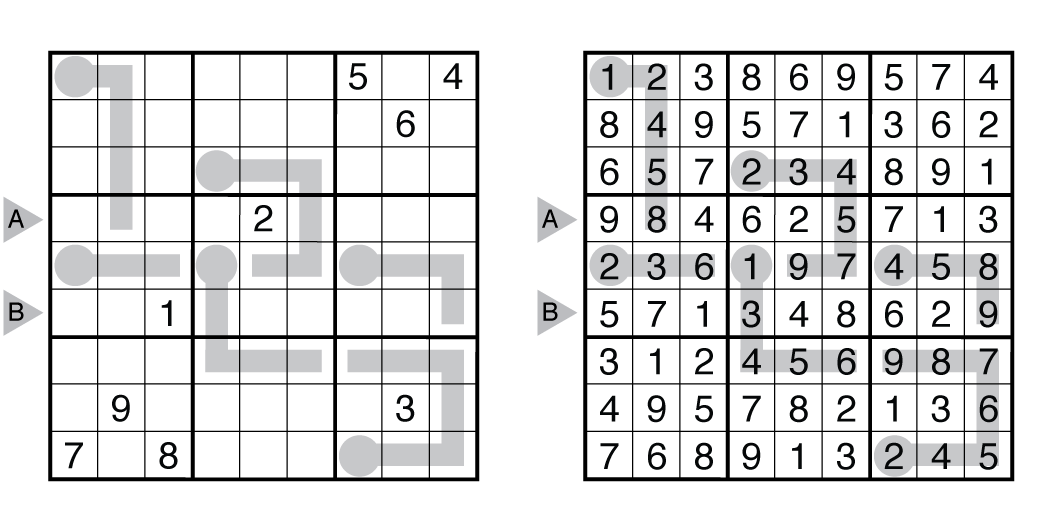Thermo-Sudoku R&I

Rules: Standard Sudoku rules (insert a number in the indicated range into each cell so that no number repeats in any row, column, or bold region). Some thermometer shapes are in the grid; numbers must be strictly increasing from the round bulb to the flat end.
Answer String: Enter the row/column marked “A”, followed by a comma, followed by the row/column marked “B”. Rows are entered from left to right and columns from top to bottom. This example has the key “984625713,571348629”.
(Brief) History of Thermo-Sudoku: Descended from Sudoku and relational puzzles. Thermo-Sudoku puzzles were created to provide a simplified and more visually interesting presentation of inequality concepts compared to other puzzles that primarily use greater than/less than symbols. This name was first given to the style in the book Mutant Sudoku by Wei-Hwa Huang and Thomas Snyder.
History of this example: “Easy as 1,2,3?” This Thermo-Sudoku was written by Thomas Snyder for Sudoku Cup 3.
Sources for Thermo-Sudoku: Follow this link for Thermo-Sudoku puzzles on this website. If you are new to this puzzle type, here are our easiest Thermo-Sudoku to get started on. More Thermo-Sudoku puzzles can be found in The Art of Sudoku 2 and Masterpiece Sudoku Mix 2; another source (now out of print) is Mutant Sudoku.
Design rules for contributors: A Grandmaster Thermo-Sudoku will have a unique solution that can be reached by logic alone. Generally, a Grandmaster Thermo-Sudoku has a symmetric layout of numbers or thermometers or a visually interesting theme that does not need symmetry. Thermometer shapes can branch, with multiple bulbs or ends, but cannot loop. Given numbers should not appear on the thermometer shapes.
